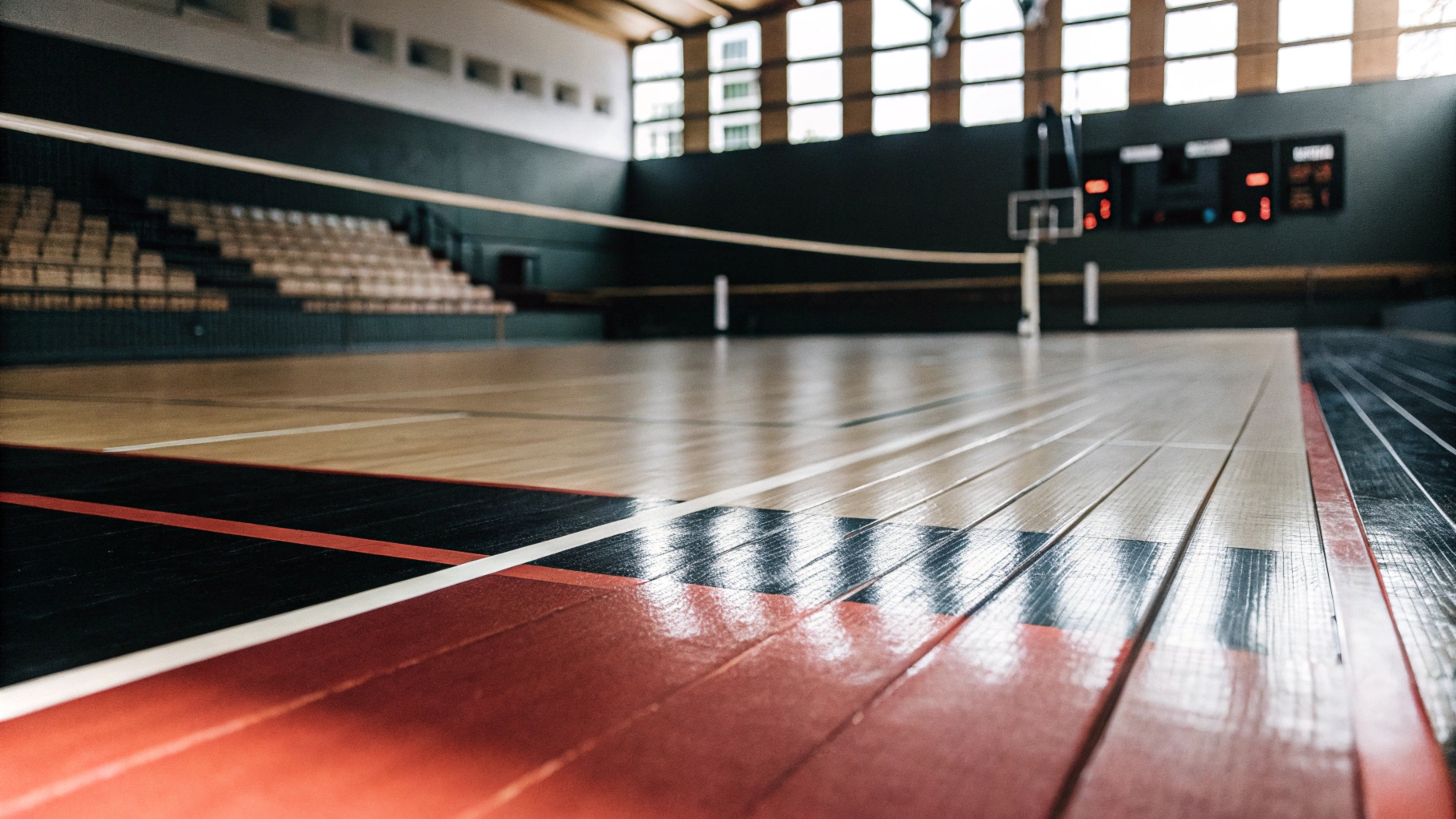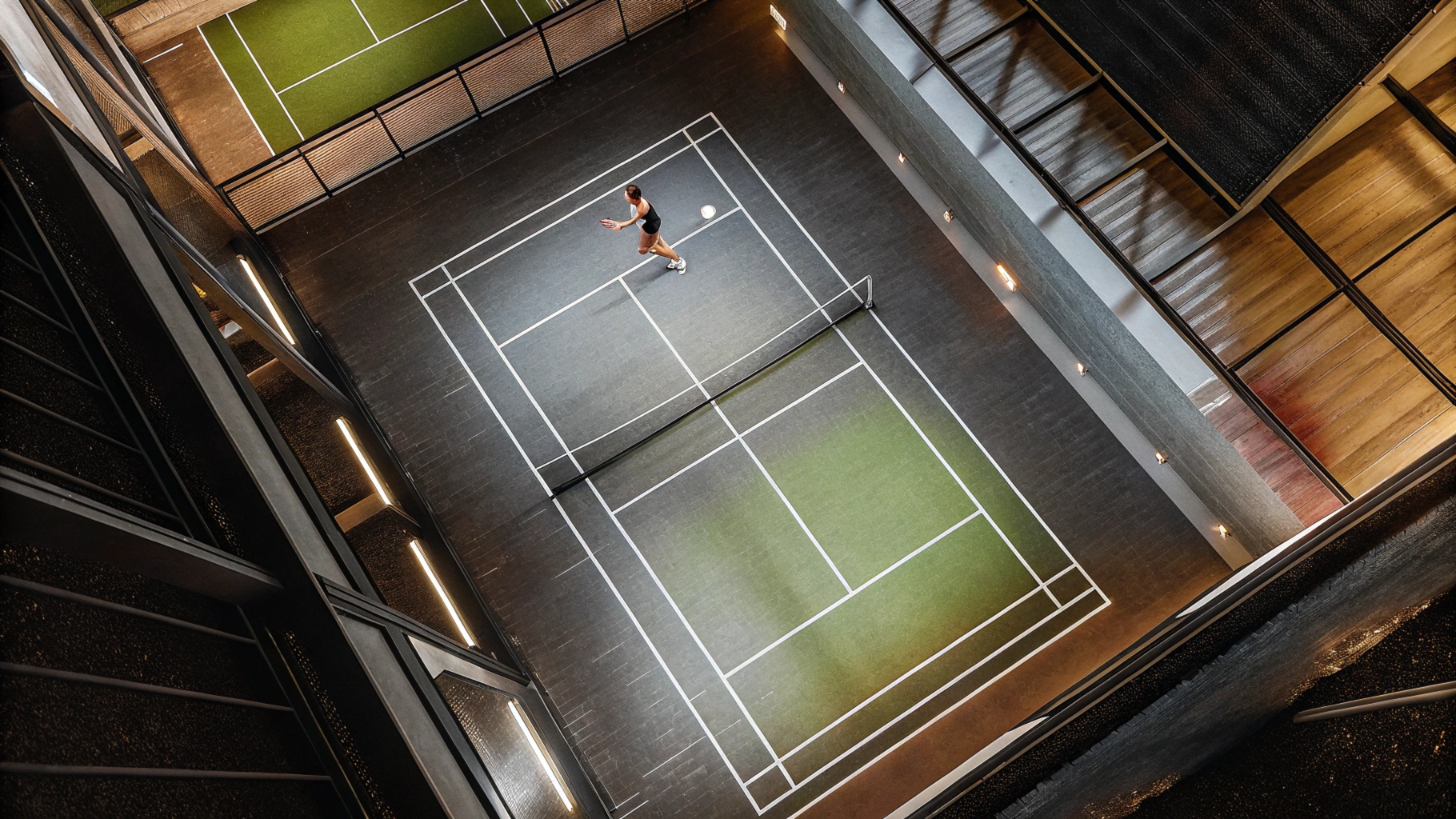
When it comes to badminton courts, choosing the right flooring material is essential. Over the years, I’ve worked with different flooring options and learned firsthand how materials impact performance, safety, and durability. Whether you're a facility manager or a contractor looking for reliable solutions, this guide will give you clarity.
Wooden and synthetic floors, like PVC or polyurethane, are widely used for badminton courts because of their durability, cushioning, and suitability for all types of players.
If you’re planning a project, understanding the pros and cons of each material will save you time and money.
What are badminton court floors made of?
Whenever clients ask me about badminton courts, the first question is usually, "What materials should we use?" It’s a valid concern because the wrong material can lead to injuries or frequent replacements.
Badminton courts are typically made of wood, PVC, or synthetic materials like polyurethane, providing durability and performance for recreational and professional settings.
From my experience, the choice depends on the type of facility and how often the courts will be used.

Materials I Recommend
-
Wooden Flooring
Wooden courts are a classic option. Personally, I love their natural look and feel. They’re perfect for high-end facilities or professional tournaments.Why I recommend them:
- Outstanding durability
- Excellent shock absorption
- Compliance with international standards
What to watch out for:
Wooden floors need maintenance, and they don’t perform well in humid environments without proper sealing. -
PVC Synthetic Flooring
PVC is the go-to material for most modern courts. It’s cost-effective and easy to install, which is why I often suggest it to clients looking for quick, low-maintenance solutions.Why it works:
- Great traction for players
- Long-lasting under regular use
- Budget-friendly for multi-court setups
Downside:
While durable, it may show wear in high-traffic areas faster than wood. -
Polyurethane Flooring
This is a premium choice for multi-use sports facilities. I recommend it when versatility and seamless installation are key.What I like about it:
- Seamless finish for a polished look
- High resistance to wear and tear
- Customizable thickness for added comfort
Consideration:
It’s pricier than PVC, so it’s ideal for facilities prioritizing long-term value.
What floor is badminton played on?
The surface for badminton courts plays a crucial role in ensuring optimal performance and safety.
Badminton is played on synthetic PVC or polyurethane floors, often layered over wooden bases for cushioning and durability.
These materials provide the right balance of comfort and performance for players.
Indoor vs. Outdoor Floors
-
Indoor Courts:
Most professional and high-level recreational games happen indoors. For these, I always recommend synthetic or wooden floors due to their performance reliability.Key benefits:
- Controlled environment reduces wear
- Shock absorption minimizes player fatigue
- Compliance with governing body regulations
-
Outdoor Courts:
For outdoor recreational courts, concrete or asphalt coated with synthetic materials is common. While these surfaces are cost-effective, they lack the cushioning needed for professional play.What works outdoors:
- Weather-resistant synthetic coatings
- Tougher materials to handle elements
What is the best surface for badminton?
If you’ve ever asked me, “What’s the best surface for badminton?” my answer depends on your priorities: performance, budget, or ease of maintenance.
The best surface for badminton is synthetic acrylic flooring, combining shock absorption, slip resistance, and long-lasting comfort.
In my experience, this material is a solid choice for both beginners and professionals.

Evaluating the Best Options
-
Performance Priorities:
You want a surface that protects players while maintaining a competitive edge. Acrylic flooring is a great all-rounder, meeting the needs of most clients.Why it’s the best:
- Superior grip for better control
- Cushions impacts, reducing injuries
- Consistent shuttle bounce
-
Cost and Maintenance:
Acrylic and PVC are affordable and require less upkeep than wood. However, wooden floors offer longevity if you’re ready to invest in maintenance.Pro Tip: For high-traffic courts, synthetic materials are a safer bet.
| Surface Type | Performance | Maintenance | Cost | Ideal Use Case |
|---|---|---|---|---|
| Wooden Flooring | High | Moderate | High | Professional Tournaments |
| PVC Synthetic | Medium | Low | Medium | Recreational Play |
| Acrylic Flooring | High | Low | Medium | All-purpose Courts |
What surface do you play badminton on?
This is the question I often hear from clients who are unsure about the best material for their courts. My answer? It depends on the environment and usage.
Badminton is typically played on wooden or synthetic surfaces, offering players cushioning, durability, and safety during intense matches.
Let’s dive deeper into why these surfaces matter.
Why Surface Choice Matters
-
Player Safety:
Floors with poor cushioning can lead to injuries, especially over time. That’s why I always stress the importance of shock-absorbent materials like wood or synthetic layers. -
Durability for High-Traffic Use:
If you’re installing floors in a facility that sees heavy use, you’ll need something resilient. Synthetic floors with protective coatings tend to last longer under constant wear. -
Adaptability to Climate:
In humid regions, I recommend synthetic materials over wood. They’re less prone to warping and can handle changes in temperature or moisture.
Conclusion
Badminton courts demand surfaces that balance performance, safety, and durability. Whether it’s traditional wooden floors or modern synthetic options like PVC or polyurethane, the right choice depends on your facility’s needs. If you’re unsure, let’s discuss your specific project requirements—I’m here to help you make the best decision!

